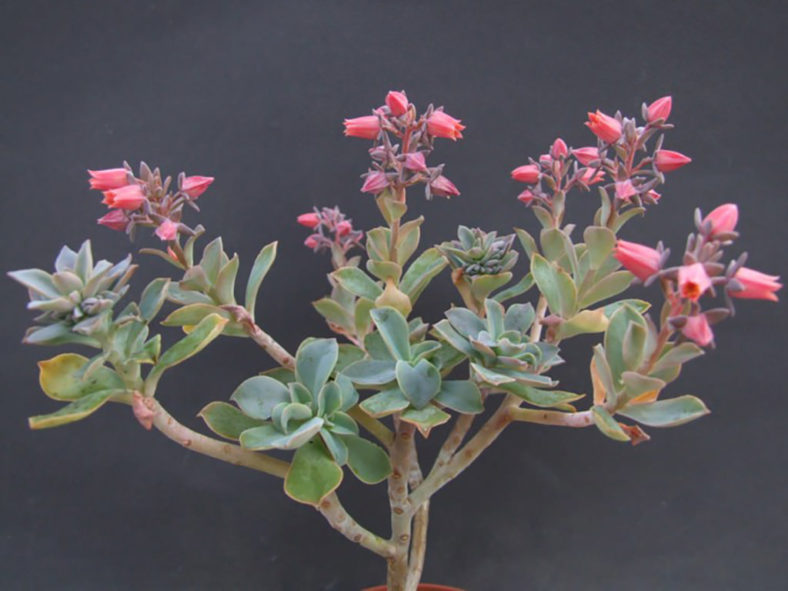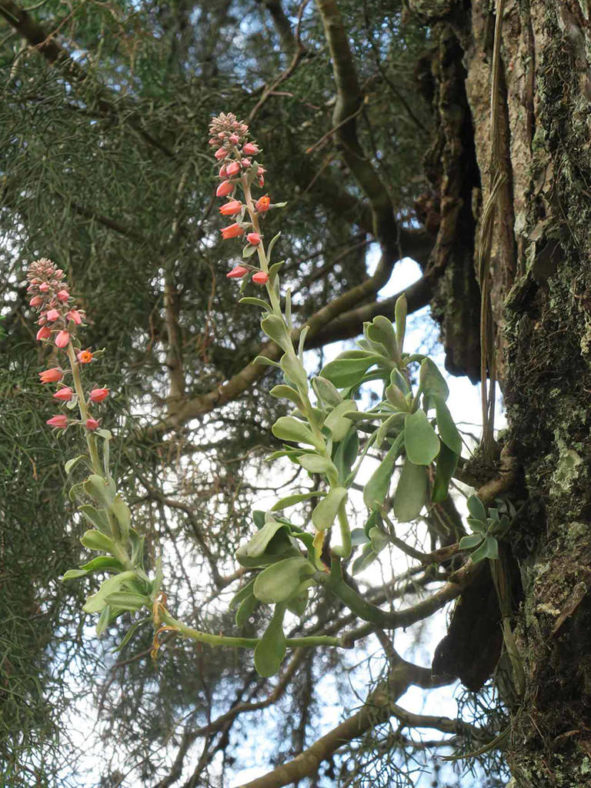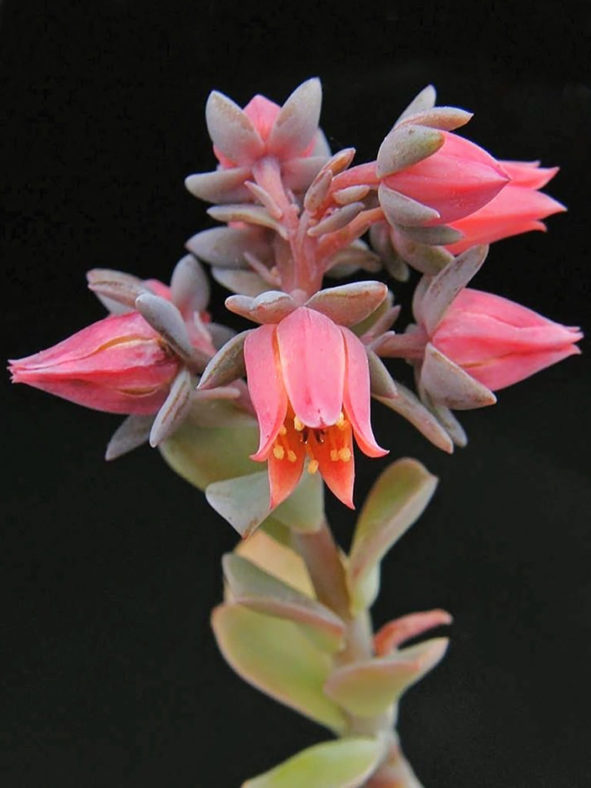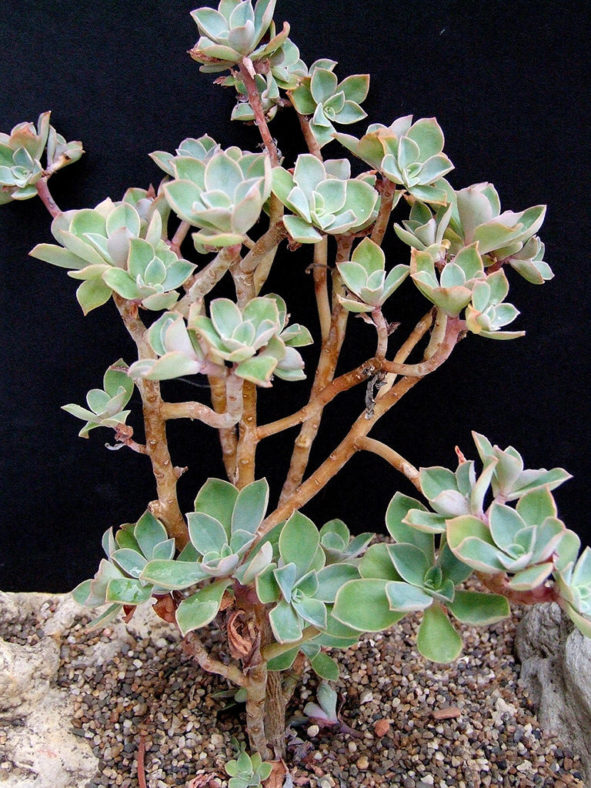Scientific Name
Echeveria australis Rose ex Britton & Rose
Scientific Classification
Family: Crassulaceae
Subfamily: Sempervivoideae
Tribe: Sedeae
Genus: Echeveria
Etymology
The specific epithet "australis (aw-STRAL-iss)" means "southern" and refers to the relatively southern distribution concerning the bulk of the genus.
Origin
Echeveria australis is native to Costa Rica (San José and Cartago Provinces) and Panama (Chiriqui Province). It is mostly epiphytic, inhabiting rocks and stone walls.
Description
Echeveria australis is a sparingly branched succulent shrub with stout, glaucous branches bearing somewhat glaucous and often purplish leaves. The branches can grow up to 12 inches (30 cm) long or 24 inches (60 cm), including the inflorescence. The leaves are obovate or spatulate, rounded or abruptly acute at the tip, thickly set at the apex of branches, and early falling off below. They can measure up to 2.8 inches (7 cm) long and 1.2 inches (3 cm) wide and are progressively smaller along the flowering stems.
The flowers are bright red, bell-shaped, and appear in terminal clusters in winter.

How to Grow and Care for Echeveria australis
Light: E. australis prefers full sun to partial shade. If you move your plant outside in the spring, do it gradually. The intense afternoon sun can cause sunburn. During the winter, when your E. australis is inside, put it near the brightest window in your home. It will stretch if it does not have enough sunlight.
Soil: This succulent needs a potting soil mix that drains quickly. Many growers will create their own mix. However, commercial succulent potting mixes will work fine.
Temperature: This plant is a tender succulent, which means it must be brought indoors for the winter to survive. E. australis can withstand temperatures as low as 30 °F (-1.1 °C). USDA Plant Hardiness Zones 10a to 11b, 30 to 50 °F (-1.1 to 10 °C).
Watering: Provide moderate amounts of water from spring to fall. The "soak and dry" method is the preferred schedule for watering E. australis. If you have saucers under the pots, empty the water briefly. Water your plant just enough to keep it from shriveling during winter.
Fertilizing: E. australis grows well without fertilizer but may benefit from the extra nutrients. Use a slow-release fertilizer in spring or a liquid fertilizer diluted 2 to 4 times more than usual and used less often than recommended.
Repotting: Repot the plant only as needed during spring or early summer when it grows actively. To repot your E. australis, ensure the soil is dry before repotting.
Propagation: This succulent is usually propagated from leaves or stem cuttings. Spring is the best time to take leaf cuttings.
Learn more at How to Grow and Care for Echeveria.
Toxicity of Echeveria australis
E. australis has no toxic effects reported. It is safe around pets and humans, although it is not advisable to eat it.
Links
- Back to genus Echeveria
- Succupedia: Browse succulents by Scientific Name, Common Name, Genus, Family, USDA Hardiness Zone, Origin, or cacti by Genus
Photo Gallery
Click on a photo to see a larger version.


